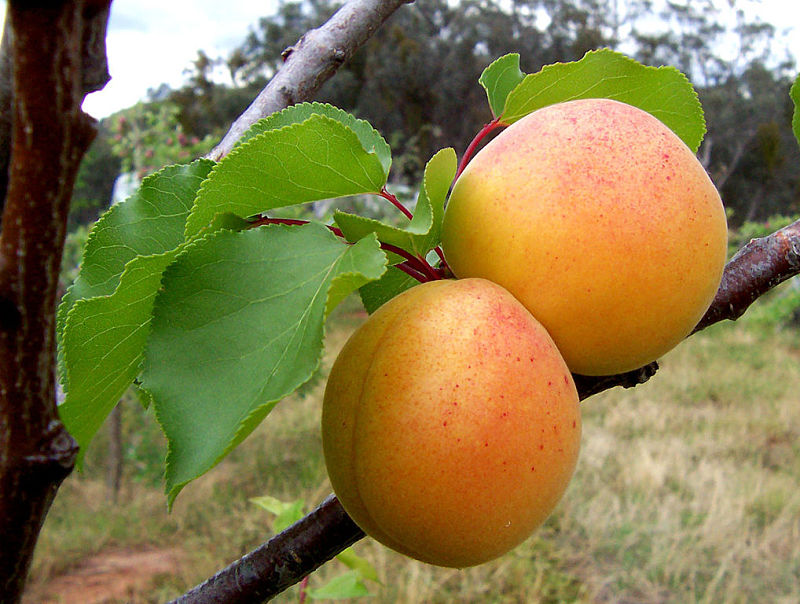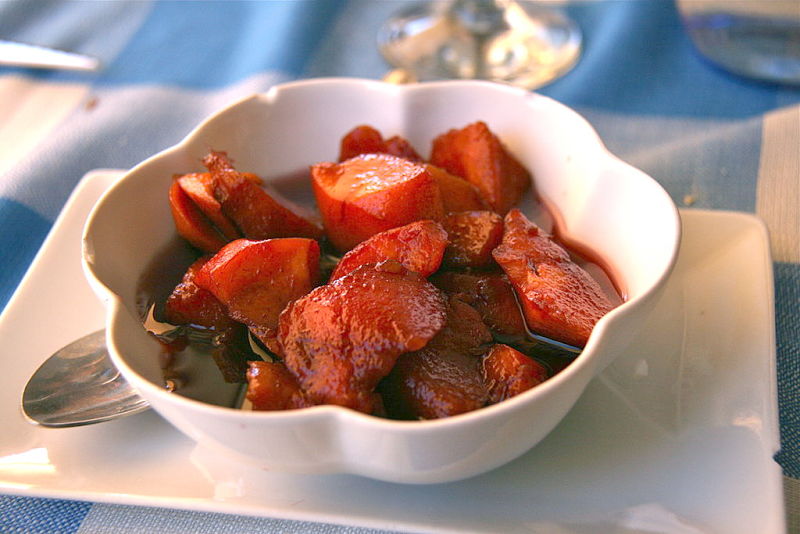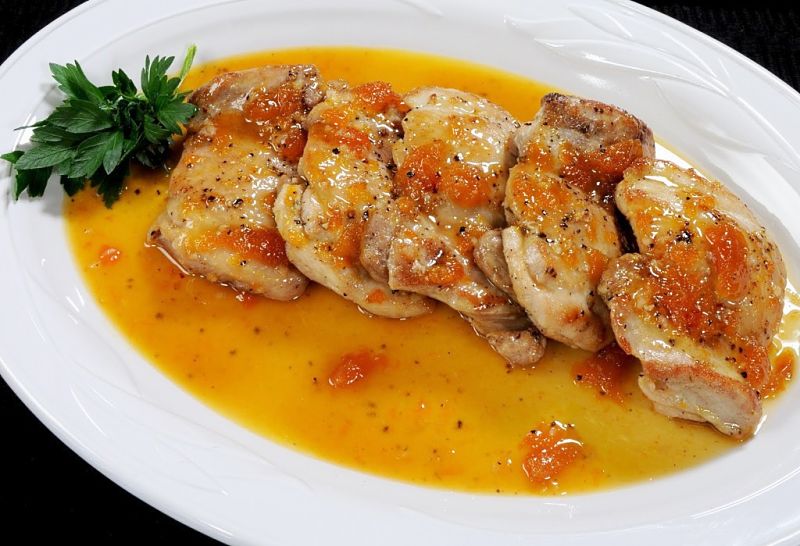Health Benefits of Peaches, Nutrition Facts, Culinary Uses, Recipes
Delicious, soft, tangy and sweet, peaches are native to China but are now grown throughout the world using a varieties of cultivars. Like nectarines, peaches, plums and almonds which belong to the family Rosaceae, genus Prunus.
Plums vary in color, size and taste. Many people don't like the 'hairy' skin and choose the smooth skinned nectarine, but others say the taste and texture of peaches is superior.
Although most peaches are eaten fresh, canned peaches, dried peaches and peach juice products, are also very popular.
Peaches are very versatile as an ingredient in sweet and savory dishes from pies to curries and from smoothies to salads and Asian stir fries and other exotic dishes.
Peaches are very healthy and are a great source of natural fiber, vitamins, antioxidants, minerals. They should be used more often to boost the nutritional value of home cooked foods and dishes.
This article summarizes the nutrition facts for peaches in comparison with other similar fruits: Plums, Nectarines, Apricots, Sweet Cherries.
It highlights the health benefits of peaches, how to use them in a variety of dishes and some great recipes to try.
Health Benefits of Fresh Peaches
The flesh of fresh peaches is white to creamy-yellow in color, depending on the variety. The ripening stage and variety also determines the balance between acidity, tartness and sweetness, and the softness of the flesh. Firm, slightly unripe peaches are better for cooking. The 'furry' skin can be easily removed along with the seed, with some varieties having a slip-seed that is easier to remove.
The nutrition facts for peaches is provided in the table at the end of the article with data for similar fruits to provide a comparison.
Peaches have few calories with just 39 Calories per 100 g and they are regarded as a low calorie dense food because of the fiber and water. Eating peaches fills you up and delays the return of hunger pangs than can occur when eating chocolate, biscuits or cakes for snacks.
Peaches are low in fat and have no saturated fats or cholesterol.
Peaches are a great source of antioxidants that help maintain the immune system and the fight against free oxygen radicals in the body that drive the aging process and trigger many diseases. For 100 g of fresh peach fruit the total anti-oxidant power (ORAC value) is 1,814 Trolex equivalents, which is lower than for plums at 6,259 Trolex equivalents/100 g, but is higher than for many other fruits. Peaches are a great source of the various flavonoid poly phenolic antioxidants such aszea-xanthin, lutein, and beta-cryptoxanthin.
Fresh peaches are a great source of vitamins particular vitamin C, vitamin A and carotene -beta (yellow flesh peaches). Vitamin A is essential for vision and helps maintain healthy skin and mucus membranes and skin. Vitamin C helps maintain the immune system.
Fresh peaches are a wonderful way to supply the essential minerals you need to maintain good health, especially Potassium, Copper, Iron, Magnesium, Manganese and Zinc.
Preparation and Serving Tips for Fresh Peaches
Peaches are available virtually right throughout the year from various sources, but choose local ones in their normal season. Choose peaches with bright, fresh color that are not hard and unripe. Avoid fruit that is with too soft, or has bruises or cuts. Ripe fruits yield to gentle pressure with you fingers and have a prominent sweet aroma. For cooking choose ripe but very firm peaches. Dried peaches can be soaked in water and used for cooking if fresh peaches are unavailable.
Wash peaches well using cold running water just before using. Washing them earlier can cause the skin to open and blemish. The skin can easily be peeled using a knife (dipping them in very hot water makes the tight-skin varieties easier to peel. Only slice the peaches just before serving or using because the sliced fruit sections turn brown on exposure to air via a chemical reaction (similar to apples and other fruit). Adding a few drops of fresh lemon to sliced peaches can help to stop them browning.
Culinary Uses of Fresh Peaches
- Peach sections make a great addition to fruit salads and other salads.
- Bake peach halves and serve with whipped cream or ice cream.
- Peaches are used in a huge variety of desserts and baked item such as pies, tarts, crumbles, baklava, charlottes, jams, jellies, sweets and candies.
- Add peaches to fruit smoothies
- Top breakfast cereal with fresh slices of peaches
- Peaches make wonderful additions to various casseroles, curries and stews.
- Add peaches to stir fries and many Asian dishes
Best Ever Fresh Peach Recipes to Try
Try some of these recipes which showcase the versatility of peaches for cooking.
Peach, Strawberry and Blueberry Galette
- 6 tablespoons turbinado sugar (or other sugar)
- 4 tablespoons all-purpose flour
- 4 tablespoons white sugar
- 1/2 punnet fresh blueberries
- 1 punnet of fresh strawberries, sliced
- 3 fresh peaches - peeled, seeds remove and sliced
- 2 (9 inch; 20 cm) pie crusts
Preheat oven to 450 degrees F (230 degrees C). Grease or spray a baking sheet with parchment and place two pie crusts on it - well spaces apart. Mix the sliced peaches, blueberries, strawberries, 4 tablespoons of sugar, 4 tablespoons of the flour in a bowl. Spoon into the pie crusts leaving a 1-inch (3 cm) border around the perimeter. Fold the border over the edge of the fruit and pinch to form pleats. Sprinkle 3 tablespoons of turbinado (or raw) sugar over the top of the the crust and fruit. Bake in the preheated oven for 10-15 minutes until the crust is lightly browned. Serve warm or at room temperature with whipped cream or ice cream.
Peach Bacon and Tomato Pasta
- 1/3 cup grated Parmesan cheese or other cheese as topping
- 1/4 cup chopped fresh basil
- 3-4 ripe peaches, seeded, peeled and chopped
- 2 cups grape or cherry tomatoes, sliced in half ( or 3 medium to large tomatoes, finely chopped
- 2 cloves garlic, finely chopped
- 2 tablespoons olive oil
- 6 slices bacon
- 1 x (16-ounce; 500 g) pack of spaghetti or linguine
- Salt and pepper to taste
Boil the pasta in a large pot of salted water and cook until al dente. Meanwhile, cook bacon until crisp (whole or chopped, but it must be very crisp to get maximum flavor). Drain the bacon chop finely and set aside. Add olive oil, tomatoes, garlic to the pan and fry cook for 2-3 minutes. Drain pasta when done, keeping about 1/3 cup of the water. Add the cooked pasta to pan and then the peach slices and mix well to coat the pasta strands. Add some of the cooking to moisten the pasta. Add the bacon, basil, salt and pepper to taste and serve immediately with cheese on top.
Barbecued or Grilled Pork Chops with Peach Quarters
- 4 pork loin chops, bone in (1-1/4 lb : 625 g)
- 2-3 firm ripe peaches, sliced into quarters (no need to peel)
- 1 pinch pepper
- 1/4 tsp salt
- 3 cloves garlic, minced
- 1 tablespoon grainy mustard
- 2 tablespoon cider vinegar
- 1/4 cup red pepper jelly, melted
- 1/4 cup chopped fresh basil or mint
Mix the pepper, salt, garlic, mustard, vinegar, red pepper, and basil in a bowl. Add the chops mixing to coat all surfaces and set aside for 20 minutes. Place chops on a greased grill or barbecue over medium-high heat. Add the peaches midway through after turning the chops. After two minutes flip the peaches over. Grill until the chops are just cooked and the peaches have started to brown (about 6 minutes). Remove the peaches and keep warm if the chops require extra time. Return the peaches to warm through before serving.
Simple Old Fashioned Two Crust Peach Pie
- 2 tablespoons butter
- 1/4 teaspoon salt
- 1/4 teaspoon ground nutmeg
- 1/2 teaspoon ground cinnamon
- 1 cup white sugar
- 1/2 cup all-purpose flour
- 2 tablespoons lemon juice
- 5 cups sliced peeled peaches
- 1 egg, beaten
- 1 x 15 oz ( 450g) package pastry for a 9 inch (20cm) double crust pie
Preheat the oven to 450 degrees F (220 degrees C). Line the sides and bottom of the pie plate with one of the crusts. Brush over with beaten egg to keep the dough moist. Put the peaches into a large bowl, drizzle over the lemon juice and mix. In a separate bowl, combiner the flour, cinnamon, sugar, nutmeg and salt. Spoon over the peaches, and mix to combine well, but gently. Transfer the mixture into the pie crust, and add some dots of butter. Put the other pie crust on top and fold the edges under. Seal the edges to seal using a fork. Brush the top crust with beaten egg. Make several slits in the top crust to allow steam to escape. Bake for only 10 minutes in the preheated oven set to high. Then lower the temperature to 350 degrees F (175 degrees C) and bake for an extra 30 - 40 minutes, until the juice starts to bubble through the vents and the crust is brown. Serve warm but not hot.
Nutrition Facts for Peaches compared with Other Fruit
| Nutrient Value per 100 g | Peaches | Plums | Nectarines | Apricots | Sweet Cherries |
|---|---|---|---|---|---|
| Energy | 39 Cal | 46 Cal | 44 Cal | 50 Cal | 63 Cal |
| Carbohydrates | 9.54 g | 11.42 g | 10.55 g | 11 g | 16.1 g |
| Protein | 0.91 g | 0.70 g | 1.06 g | 1.4 g | 1.06 g |
| Total Fat | 0.25 g | 0.28 g | 0.32 g | 0.4 g | 0.2 g |
| Cholesterol | 0 mg | 0 mg | 0 mg | 0 mg | 0 g |
| Dietary Fiber | 1.5 g | 1.40 g | 1.7 g | 2 g | 2.1 g |
| Vitamins | |||||
| Folates | 4 mcg | 5 mcg | 5 mcg | 9 mcg | 4 mcg |
| Niacin | 0.80 mg | 0.42 mg | 1.13 mg | 0.6 mg | 0.15 mg |
| Pantothenic acid | 0.15 mg | 0.13 mg | 0.18 mg | 0.24 mg | 0.2 mg |
| Pyridoxine | 0.03 mg | 0.03 mg | 0.03 mg | 0.05 mg | 0.05 mg |
| Riboflavin | 0.03 mg | 0.03 mg | 0.03 mg | 0.04 mg | 0.03 mg |
| Thiamin | 0.02 mg | 0.03 mg | 0.03 mg | 0.0 mg | 0.03 mg |
| Vitamin C | 6.6 mg | 345 IU | 5.4 mg | 10 mg | 7 mg |
| Vitamin A | 326 IU | 9.5 mg | 332 IU | 1926 IU | 640IU |
| Vitamin E | 0.73 mg | 0.26 mg | 0.77 mg | 0 mg | 0.07 mg |
| Vitamin K | 2.6 mcg | 6.4 mcg | 2.2 mcg | 3.3 mcg | 2.1 mcg |
| Electrolytes | |||||
| Sodium | 0 mg | 1 mg | 0 mg | 1 mg | 0 mg |
| Potassium | 190 mg | 157 mg | 201 mg | 259 mg | 222 mg |
| Minerals | |||||
| Calcium | 6 mg | 6 mg | 6 mg | 13 mg | 13 mg |
| Copper | 0.07 mg | 0.06 mg | 0.09 mg | 0.06 mg | |
| Iron | 0.25 mg | 0.17 mg | 0.28 mg | 0.39 mg | 0.36 mg |
| Magnesium | 9 mg | 7 mg | 9 mg | 10 mg | 11 mg |
| Manganese | 0.61 mg | 0.05 mg | 0.54 mg | 0.08 mg | 0.07 mg |
| Phosphorus | 11 mg | 16 mg | 26 mg | 23 mg | 21 mg |
| Zinc | 0.17 mg | 0.10 mg | 0.17 mg | 0.2 mg | 0.07 mg |
| Phyto-nutrients | |||||
| Carotene, alpha | 162 mcg | 190 mcg | 19 mcg | 0 mcg | |
| Carotene, beta | 67 mcg | 35 mcg | 150 mcg | 1094 mcg | 38 mcg |
| Lutein-zeaxanthin | 91 mcg | 73 mcg | 130 mcg | 89 mcg | 85 mcg |




